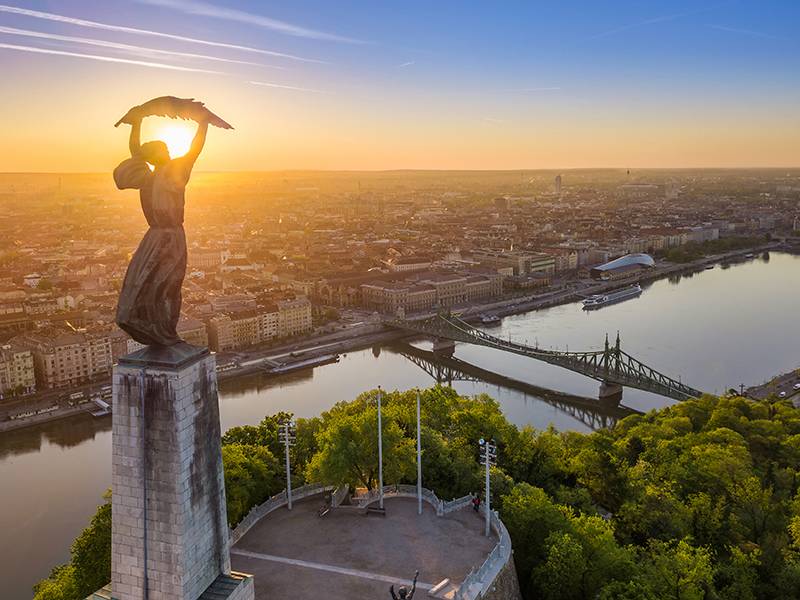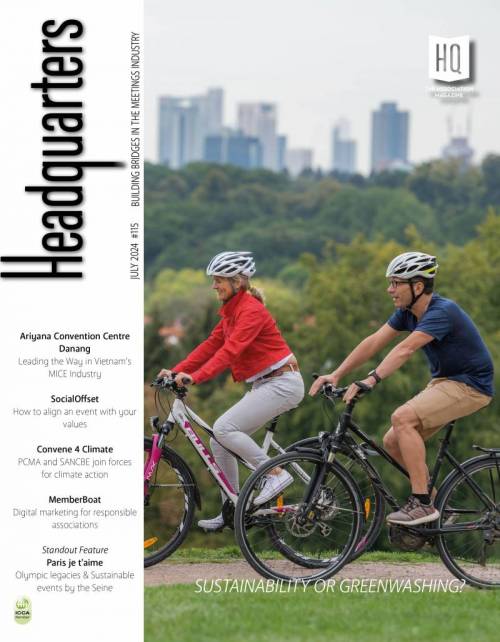Hungary: A Spotlight in the Middle of Europe

Hungary today offers a perfect combination of leisure, adventure, incentive programs and event spaces with excellent infrastructure for meetings and events. This also makes its capital Budapest a very pleasant destination for tourists and delegates.
Well positioned in central Europe, Hungary has seriously invested in its tourism performance with several valuable prepositions for the MICE industry. Despite the pandemic-driven setback, Hungarian tourism sector bounced back almost entirely to pre-pandemic levels registering some 16.2 million foreign guest nights, according to the Hungarian Tourism Agency (HTA). This summer, Hungary was able to welcome almost 2.5 times more international tourists than last summer with around 6 million foreign and 10.7 million Hungarian guest nights spent in all of the country's accommodation. Lake Balaton, for example, in 2022 retained its title as the number one tourist attraction with over 5.6 million overnight guests. The country also has an excellent reputation for gastronomy - who has never tried a good goulash or a fish soup called halászlé? Moreover, there are 22 wine districts with different climatic, topographical, soil and historical characteristics to be discovered within 6 wine regions.
Budapest, a go-to destination
But what is making Hungary one of the world's top destinations anyway? Right from the start, its incredible and convenient accessibility makes life easy for those who visit: the capital Budapest has an excellent rail network with direct links to destinations such as Vienna, Bratislava and Prague. From Budapest, you can also reach Vienna in two and a half hours, Bratislava in two hours and anywhere in the country in less than three hours. The capital is also very well provided with a modern public transport infrastructure that includes metro, bus and tram. Budapest's attractions are countless but among them it is impossible to miss Buda Castle, the embankments of the Danube River and the entire Andrássy Avenue, all recognised as UNESCO World Heritage Sites, in addition to the Hungarian National Gallery, the Matthias Church the Parliament Building and the splendid Margaret Island. There are many opportunities for cycling in Budapest exploring both banks of the Danube: Buda the most historical and traditional part of the city, and Pest with all the leisure, catering offers which makes its atmosphere much more vibrant and trendy. The city has great cultural offers like the newly renovated opera house, the biggest synagogue in Europe on Dohány street, and several ruin bars with a very pleasant atmosphere. With the development of HUNGEXPO, which opened last year, Budapest now has its go-to convention centre, sharing the city's agenda with the Budapest Congress Centre. This made the business volume demand greater hotel capacity with several multi-star hotels scattered throughout the city centre. The Accor hotel group has many hotels here, from the utilitarian Ibis to the upscale Sofitel.

The Hungarian Parliament Building one of the country's most remarkable architectural landmarks
Country’s investments and major industries
Long before COVID-19, there was already a lot of investments, especially in the booming automotive industry. "We have well-known automakers in the country, such as BMW, Suzuki or Mercedes-Benz with one of the biggest factories in Europe, attracting many other small manufacturers to the market. A Chinese manufacturer of car batteries has also entered the country with a plant in one of the biggest investments ever in Hungary. They are a magnet for our economy," tells us Ivan Ljubinkovic, Regional Head of Business Development at HTA. One of the biggest Hungarian industries remains the pharmaceutical responsible for a large amount of congresses in the country. Along these lines, projects continue to be carried out in R&D centres, mainly in the IT sector. “We have a lot of dynamic investments from South Korea like Samsung with a big plan for the country. In 2021, LOT Polish Airlines established direct flights from Seoul to Budapest and, in October, Korean Air opened new routes. These investments validate the direct communication between the two countries," says Ljubinkovic. Another predominant area is definitely the real estate. The BudaPart project, which is a major real estate investment project in the capital, won the Best Neighbourhood Development award at the FIABCI international real estate competition in Paris. The urban renewal project includes offices, flats and other private ventures in a predominantly industrial area. “We will also have a renewed railway line between Belgrade and Budapest which is planned to be completed by 2023," Ljubinkovic adds.

Bálna is a cultural, hospitality and commercial centre in Budapest
Innovation pinches in Hungary
Hungary is now strategically betting on digitalisation. "In September, we launched our Hungarian Digital Agency which aims to assist the government in the process of digitalising services, identification and migrating the entire administrative process to online." But the big news for the tourism sector is a new statistical software that will focus directly on data collection on stay bookings and tourist information that will be extended to the MICE industry. The National Tourism Data Supply Centre - a digital platform that makes all data on turnover statistics from all accommodation establishments in the country visible anonymously, in real time. This has been effectively implemented in all Hungarian accommodation establishments and will be mandatory next year for all service providers, including restaurants, baths and other tourist attractions. Thus, HTA will be able to collect anonymous information for statistical purposes, taking into account the destination of origin, check-in dates, advance reservations, duration of stay, which will give a good view of the tourist landscape and its evolution. “This tool is essential in the marketing decision-making process based on reliable figures and, in that sense, it is a huge innovation for us. What we want to guarantee at this moment is the return on the investment we made in promoting tourism, campaigns and program development. And the only way we can see it is if we measure it," says Ljubinkovic.

Müpa Budapest is a modern cultural institution in the heart of the capital
HTA and HCB strategic promotions
HTA outlined a strategy that aims to boost the country's tourism by 2030, and with that several partnerships were built. B2C communication marketing campaigns with entities such as CNN, National Geographic, Expedia Group, and other agreements with airlines such as Lufthansa to improve connectivity between Hungary and the rest of the world. "We have also established constant B2B communication that aims to enhance our brand with tour operators and international travel agencies. In 2019, we started with ten international markets and today we increase that number to thirty. This also implies the MICE industry especially meetings and incentives." Even if the biggest and most complex events end up being held in Budapest, it is HTA's intention to spread the business across the country especially if we are talking about incentives, meetings or events organised by neighbouring countries. "A lot of leisure tourism takes place in the countryside but in the MICE business there is still room for improvement. That's why we want to support the promotion of MICE to other provinces and cities, splitting our activities between the HTA and the Hungarian Convention Bureau. Often the popularity of a MICE destination is also due because it is a good tourist destination," concludes Ivan.
Other Articles
About Us
Supported by the Union of International Associations (UIA), the International Association of Professional Congress Organisers (IAPCO) and the Interel Group, the global public affairs and association management consultancy, Headquarters Magazines serve the needs of international associations organising worldwide congresses.















